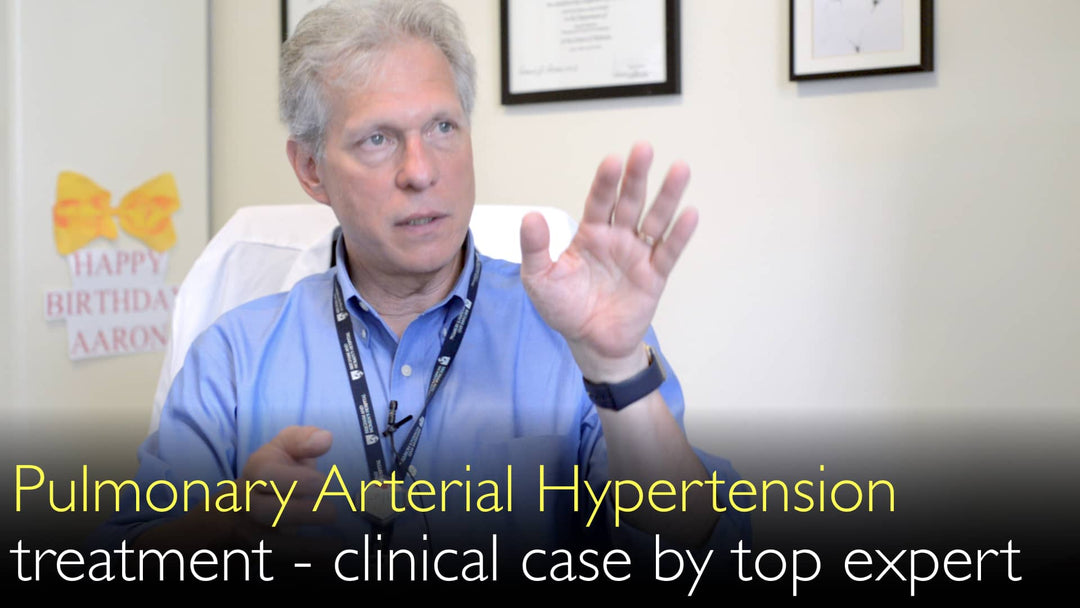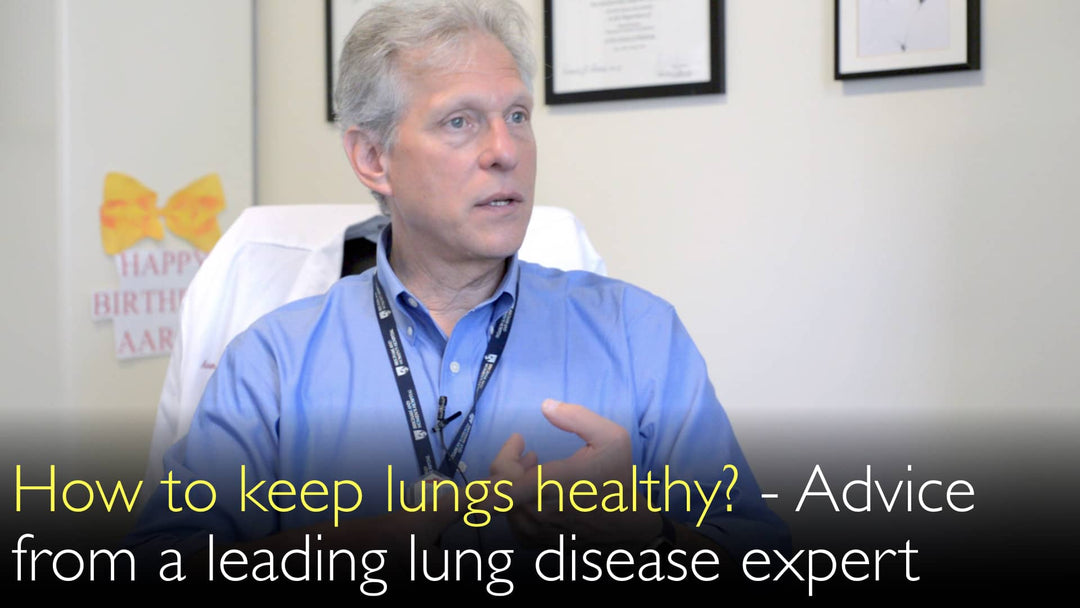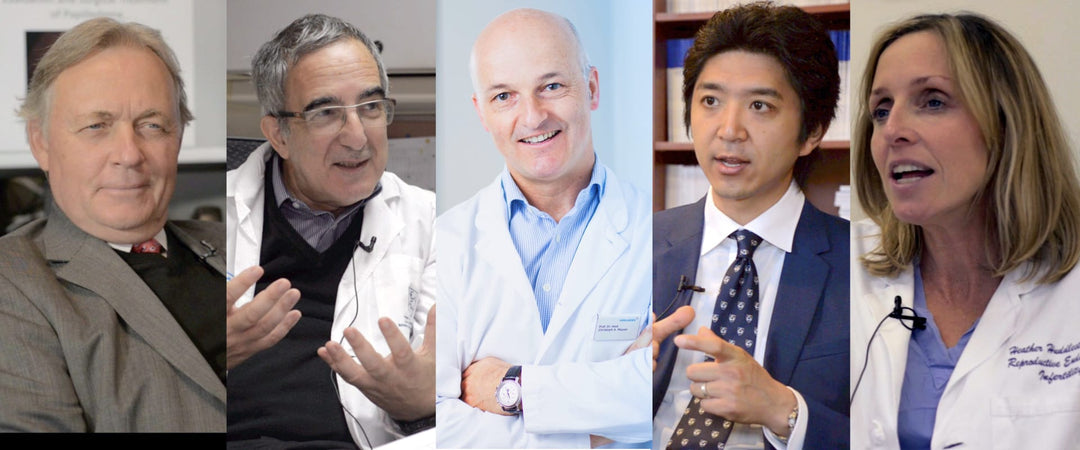Leading expert in pulmonary hypertension and dyspnea, Dr. Aaron Waxman, MD, explains how shortness of breath is a frequently misdiagnosed symptom. Patients often wait two years and spend over $150,000 on incorrect tests. A specialized diagnostic program using invasive cardiopulmonary exercise testing can pinpoint the true cause. Correct diagnosis leads to targeted treatments that can reverse conditions like early pulmonary arterial hypertension. A multidisciplinary approach is crucial for solving complex cases of unexplained breathlessness.
Diagnosing Unexplained Shortness of Breath: Causes and Advanced Evaluation
Jump To Section
- Common Misdiagnosis of Breathlessness
- Three Key Diagnostic Tests
- Invasive Exercise Testing Protocol
- Spectrum of Breathlessness Diagnoses
- Multidisciplinary Diagnostic Approach
- Time and Cost of Delayed Diagnosis
- Full Transcript
Common Misdiagnosis of Breathlessness
Shortness of breath is an extremely common symptom, second only to pain as a patient complaint. Dr. Aaron Waxman, MD, notes that physicians often assign a convenient diagnosis based on a patient's age rather than a thorough evaluation. Young patients under 55 are frequently misdiagnosed with asthma and prescribed inhalers that do not work. Older patients are often incorrectly told they have COPD or heart failure.
These three conditions—asthma, COPD, and heart failure—are relatively easy to confirm or rule out with standard testing. Dr. Aaron Waxman, MD, emphasizes that many patients with persistent shortness of breath do not actually have these common diseases. This pattern of misdiagnosis leads to ineffective treatment and a prolonged search for answers.
Three Key Diagnostic Tests
A proper evaluation for unexplained dyspnea begins with three fundamental tests. Dr. Aaron Waxman, MD, explains that patients should first undergo pulmonary function testing to assess lung capacity and function. If these results are normal or do not explain the symptom, an echocardiogram is the next step to evaluate heart structure and function.
The third essential test is chest imaging, either a radiograph or a CT scan. A critical point from Dr. Waxman is that most patients are only symptomatic during exertion. Therefore, resting tests often fail to capture the abnormal physiology causing their breathlessness during activity.
Invasive Exercise Testing Protocol
For complex cases, Dr. Aaron Waxman, MD, employs invasive cardiopulmonary exercise testing (iCPET). This advanced procedure involves placing a catheter into the pulmonary artery to measure pressures in the heart and lungs during exercise. A second catheter is placed in a radial artery to monitor blood pressure and sample blood.
The patient then performs an incremental exercise test on a stationary bicycle. Dr. Waxman's team captures detailed physiologic data every minute, including gas exchange and blood samples from both catheters. This provides a complete picture of cardiopulmonary function under stress, allowing for a precise, physiology-based diagnosis.
Spectrum of Breathlessness Diagnoses
The iCPET protocol reveals a wide spectrum of underlying causes for shortness of breath. Dr. Aaron Waxman, MD, states they can generally narrow the diagnosis to five or six categories. These include early pulmonary arterial hypertension (PAH), which can be reversed if treated early. Another common finding is heart failure with preserved ejection fraction (HFpEF), a form of pulmonary hypertension.
The testing also identifies patients with dysautonomia, often an autoimmune-related small fiber polyneuropathy. Other diagnoses include neuromuscular diseases and metabolic disorders. Dr. Aaron Waxman, MD, notes that these conditions were not part of traditional cardiology or pulmonology training, highlighting the need for specialized expertise.
Multidisciplinary Diagnostic Approach
Solving complex dyspnea requires thinking beyond individual medical specialties. Dr. Aaron Waxman, MD, stresses that physicians often become narrowly focused on their own field, missing other potential causes. His program's success is built on a multidisciplinary team that includes pulmonologists, cardiologists, rheumatologists, radiologists, and surgeons.
This collaborative model allows for broader, more open-minded diagnostic thinking. It prevents patients from being "siloed" into an incorrect common diagnosis that doesn't match their physiology. Dr. Anton Titov, MD, agrees that this multidisciplinary approach is crucial for finding the best treatment for any complex disease.
Time and Cost of Delayed Diagnosis
The delay in achieving a correct diagnosis for shortness of breath is significant and costly. Dr. Aaron Waxman, MD, reports that the average time from symptom onset to diagnosis is two years. During this period, patients often undergo repeated, unnecessary testing.
Dr. Waxman's data shows patients spend an average of $100,000 to $150,000 on diagnostic tests before reaching a specialist. Physicians, wanting to help but unsure how, often re-order the same tests. Dr. Waxman advocates for seeking a remote expert medical opinion early to save both time and money. His team can typically provide a correct diagnosis within six weeks of evaluation, leading to appropriate and effective treatment.
Full Transcript
Being short of breath, especially on exertion, is a common symptom. Real causes are often missed. Shortness of breath causes can be hard to find.
Leading lung disease expert explains diagnostic and treatment options. Shortness of breath is the main symptom. Becoming short of breath is a common symptom. Shortness of breath has many causes. One of those causes could be pulmonary arterial hypertension.
Dr. Aaron Waxman, MD: It is a relatively rare situation. But pulmonary arterial hypertension is a very important disease.
Dr. Anton Titov, MD: How to find causes of shortness of breath?
Dr. Aaron Waxman, MD: That is an important fundamental question. Because so many people complain of shortness of breath. These patients are often given a diagnosis without a lot of evaluation. Also we want to discover patients with pulmonary hypertension earlier in their disease course.
About seven years ago now we set up a Dyspnea Evaluation Program. We learned quickly several important facts about causes of shortness of breath. Shortness of breath as a complaint is probably second only to pain.
Patients very often complain that they are short of breath when they go to their doctors. Sometimes they go to their primary care physician. Or patients go to a cardiologist or a pulmonologist. Those are the three kinds of doctors that patients with shortness of breath visit.
We then learned very quickly that doctors quickly assign a convenient diagnosis to a patient with shortness of breath. It is often based on age of patient. Young patients are often told that they have asthma. By young I mean patients less than 55 years of age. They are told: ”Oh, it is asthma". Then without any diagnostic tests patients are given inhalers. Doctors then send them home.
Often, those inhalers don't work. Because patients with shortness of breath don't have asthma. But still patients are treated incorrectly, on the assumption that they had asthma.
There are patients older than 55 and who have shortness of breath. They were often told that they had either COPD or heart failure. COPD is Chronic Obstructive Pulmonary Disease. All three of those diseases are very easy to diagnose and rule out. Asthma, chronic obstructive pulmonary disease and heart failure are very easy to confirm or deny.
Many of patients with shortness of breath do not have those three diseases. We meet a patient with unexplained dyspnea [shortness of breath] or unexplained exertional intolerance.
We found that we only need three tests to put patients into the correct diagnostic category. They should have pulmonary function testing. The results of pulmonary function tests could be normal. Or they don't explain patient's shortness of breath.
Then a patient should have an echocardiogram. This could also suggest a diagnosis and explain why a patient is breathless. Cardiac ultrasound perhaps also doesn't explain patient’s breathlessness or if it is normal.
Then some sort of chest imaging is required. It is a chest radiograph or a chest CT scan. Most patients with shortness of breath aren't symptomatic at rest. Doctors cannot expect these diagnostic tests to explain why someone is short of breath.
Because shortness of breath only happens during physical exercise. It is not an obvious problem. So it is asking a lot of the diagnostic tests.
We developed a diagnostic program here for patients with breathlessness. Our diagnostic program is based on invasive cardiopulmonary exercise testing. We put into a right heart a catheter. We specifically use a Paceport Swan-Ganz catheter. We can measure pressures in the right atrium, right ventricle, and pulmonary artery.
We wedge that catheter every minute during the exercise stress test. We can get a left atrial pressure. Then we also put in a radial artery catheter to measure arterial pressure. We can then sample blood from both of these catheters.
Then a patient does a full cardiopulmonary exercise test. It is an incremental load test. So we start out at rest. Then a patient will do about two minutes of unloaded cycling. Then a patient will do a ramp protocol depending on the patient's abilities to peak exercise.
Then we will also collect data on the recovery phase after exercise stress test. Usually one hour later we will get one last set of blood samples. Every minute of this diagnostic test we are capturing the waveforms off the catheters. We are sampling the catheters. We are measuring gas exchange continuously.
We truly have access to Fick principle physiology. This is how we establish a correct diagnosis for patients with shortness of breath. We are able to tell the patient why they are short of breath. Our diagnosis is purely based on physiologic readout of objective diagnostic data.
Generally we can narrow a correct diagnosis down to about five or six diagnoses. We didn't expect to encounter these diagnoses when we first started doing this diagnostic testing.
We certainly find early forms of pulmonary arterial hypertension with this testing. We have shown in a recent publication an interesting treatment fact. We could treat a patient at an early phase of pulmonary arterial hypertension. Then we could reverse the pulmonary arterial hypertension. We could eliminate the progression of the abnormal hemodynamics.
We see early forms of heart failure with preserved ejection fraction. This is another form of pulmonary hypertension. We also see a significant number of patients who have dysautonomia. It is also called autonomic dysfunction. That turns out to be most times an autoimmune process and a small fiber polyneuropathy.
Those patients we are treating as an autoimmune disease. We also treat patients with dysautonomia symptomatically with medications. We can use pyridostigmine or Florinef, or midodrine. Then we also find neuromuscular disease. We also find metabolic disease.
We didn't learn about these diagnoses when we were trainees in pulmonology or cardiology.
Dr. Anton Titov, MD: Why patients might be short of breath? Correct diagnosis is complicated process. It requires thinking beyond individual medical subspecialties.
Dr. Aaron Waxman, MD: That is the hard part about diagnosing a patient who has shortness of breath. People get narrowly focused on their own specialty and miss the other causes of breathlessness. This is a very important point.
Because, obviously, shortness of breath is such a common symptom. It is important to investigate shortness of breath thoroughly. It is important to keep an open mind about diagnosis. A physician should not silo somebody into a common diagnosis, but incorrect diagnosis.
Patients often receive a diagnosis that might have nothing to do with the physiology and the causes of the particular patient's shortness of breath. This is the biggest problem that we have in a lot of aspects of medicine. It is how we have siloed our specialties.
Here is a unique feature of our pulmonary vascular program and our dyspnea program. We are a group of clinicians that includes pulmonologist, cardiologists, rheumatologists, and radiologists. But we cross boundaries of our specialties. We even have surgeons who are part of our clinical group.
It allows us to think much more broadly and open-mindedly. It also gives us lots of questions that we can then address from a research standpoint.
Dr. Anton Titov, MD: This is the theme that I clearly hear from many medical experts. A multidisciplinary approach to diagnosis. This is crucial for finding the best treatment for any disease.
Dr. Aaron Waxman, MD: Yes. It is the only way forward in medicine. A patient might have experienced certain symptoms. Some physicians then tell this patient. "Oh, you have this or you have that diagnosis.” It may be worthwhile to investigate the symptoms in more detail.
It’s crucial to find the right expert. An expert who will dig into the real causes of patient’s symptoms. It is not easy to make a correct diagnosis. But nevertheless it is worthwhile for the patient.
We went back and looked at our patient population. We probably see on the order of two or three hundred new patients every year with unexplained shortness of breath. We are following well over a 1,000 patients at this point.
We learned that the average time to diagnosis for the patients with shortness of breath is about two years. This is the patients we have seen. Time period to diagnosis means from the time patients started to complain of breathlessness to the time they got to our evaluation.
These patients have been complaining of shortness of breath for at least two years. Over those two years many times people have spent upwards of $100,000 to $150,000 on diagnostic testing. Physicians were repeating diagnostic tests over and over again.
Because physicians want to do something for the patient. If a physician can not treat something, they are often going to order a diagnostic test. Even though that diagnostic test has been done before. Even if it hasn't shown an answer. It is what the physicians are comfortable with.
They are comfortable with repeating the same diagnostic tests again and again. A lot of money is spent. A lot of time is wasted in getting these patients a correct diagnosis.
Patients could have used the modern technology to get the correct diagnosis. Patients could receive a remote expert medical opinion. They could send the medical information to the correct expert in shortness of breath diagnosis.
Patients with shortness of breath should try to find correct medical expert to find a cause of their symptoms. It could have saved both time and money. Getting the right diagnosis means receiving appropriate treatment for shortness of breath, at the right time.
Dr. Anton Titov, MD: Correct! That is the key.
Dr. Aaron Waxman, MD: For us, by the time a patient knocks at our door, we can usually give that patient a correct diagnosis. Only because the scheduling issues could be a problem. We are booked out for patient appointments months in advance now.
Within 6 weeks we can usually give a correct diagnosis to any patient with shortness of breath. For every diagnosis we find, we do have a treatment protocol. Effective treatments are evolving as time goes on.
We have learned a lot about these diagnoses. We are thinking about treatment for shortness of breath on a physiologic basis. It allows us to be flexible and to tailor therapy to that patient.
It pays to get to the correct experts! Everything is about finding the right person.







